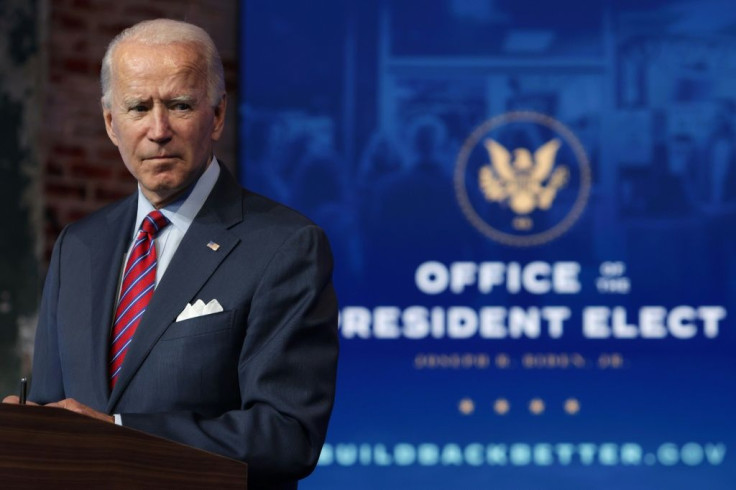Biden Inauguration Ceremony: Everything To Know About The Swearing In Of New President
KEY POINTS
- Despite COVID-19 and executive obstinance, Joe Biden's transition team is preparing for a scaled-back ceremony on Jan. 20
- While plans are not finalized, crowds and post-inauguration celebrations will be significantly smaller due to virus concerns
- Biden's team hopes to counteract this with increased online presence
Joe Biden’s inauguration team has no easy task ahead of them: fundraising, organizing and executing the first major event of the Biden presidency in the face of a viral pandemic and an uncooperative executive.
Traditionally an inauguration involves parades and thousands of spectators crowding rows of stands, but Biden's inauguration could be held virtually due to the pandemic. There have been suggestions that the inauguration could have a similar feel to the Democratic National Convention, which was also virtual.
At noon on Jan. 20 in Washington, D.C., there will be a televised stage ceremony to swear Biden in, and Biden has said that he might not wear a mask. “Layered” COVID-19 precautions will require the people around Biden on the stage to wear masks and socially distance, possibly mandating testing before the event.

Inclement weather would move the ceremony from the Capitol’s West Front to the Capitol Rotunda, further reducing the number of guests allowed in the enclosed space. That hasn’t been necessary since 1985, but if any year were to deliver a storm it would be this one.
Indoor restrictions will also affect the balls and parties that typically follow inaugurations. The Walter E. Washington Convention Center, their standard location, will be closed in January, reports the Washington Post.
Biden’s team is hoping to pick up the slack with an expanded online presence.
“There probably will not be a gigantic inaugural parade down Pennsylvania Ave.,” Biden told reports on Dec. 5. “But my guess is you'll see a lot of virtual activity in states all across America, engaging even more people than before.”
An online video call isn’t enough for some, and committee members have suggested that they could be looking to innovate new celebrations that won't spread disease.
“To me, that’s the core challenge,” Addisu Demissie, an organizer of the Democratic National Convention, told the New York Times. “You have to include the traditional elements. But you can’t just take the model that existed four, eight or 12 years ago and put it on Zoom. You have to create some new traditions. The circumstances demand that.”
The oaths are usually administered by a Supreme Court justice. Biden and vice president-elect Kamala Harris have not said whom they prefer to administer their oaths but Biden is likely to have Chief Justice John Roberts do the honor.
After Biden is sworn in, he will deliver the inaugural address. The speech usually lasts about 15 to 20 minutes.
Past presidents typically appear at the ceremony to show their support. Jimmy Carter, Bill Clinton, George W. Bush and Barack Obama are all expected to preside over the changing of power.
One person is almost sure to be absent: Donald Trump. The president has yet to acknowledge Biden’s victory and is in the planning stage of holding his own rally at the same time as the inauguration and possibly even announcing a 2024 presidential bid.
© Copyright IBTimes 2024. All rights reserved.





















